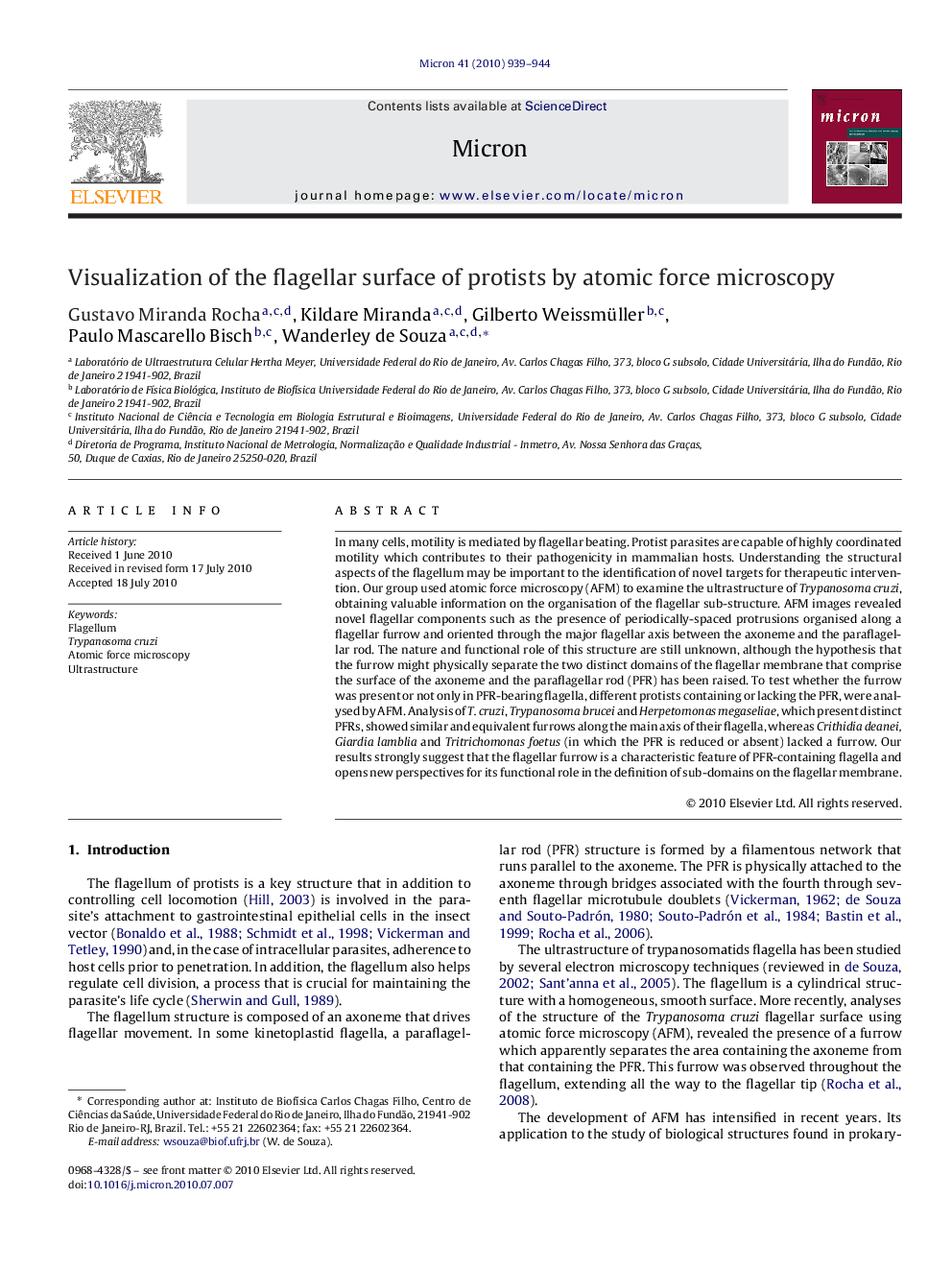| Article ID | Journal | Published Year | Pages | File Type |
|---|---|---|---|---|
| 1589403 | Micron | 2010 | 6 Pages |
Abstract
In many cells, motility is mediated by flagellar beating. Protist parasites are capable of highly coordinated motility which contributes to their pathogenicity in mammalian hosts. Understanding the structural aspects of the flagellum may be important to the identification of novel targets for therapeutic intervention. Our group used atomic force microscopy (AFM) to examine the ultrastructure of Trypanosoma cruzi, obtaining valuable information on the organisation of the flagellar sub-structure. AFM images revealed novel flagellar components such as the presence of periodically-spaced protrusions organised along a flagellar furrow and oriented through the major flagellar axis between the axoneme and the paraflagellar rod. The nature and functional role of this structure are still unknown, although the hypothesis that the furrow might physically separate the two distinct domains of the flagellar membrane that comprise the surface of the axoneme and the paraflagellar rod (PFR) has been raised. To test whether the furrow was present or not only in PFR-bearing flagella, different protists containing or lacking the PFR, were analysed by AFM. Analysis of T. cruzi, Trypanosoma brucei and Herpetomonas megaseliae, which present distinct PFRs, showed similar and equivalent furrows along the main axis of their flagella, whereas Crithidia deanei, Giardia lamblia and Tritrichomonas foetus (in which the PFR is reduced or absent) lacked a furrow. Our results strongly suggest that the flagellar furrow is a characteristic feature of PFR-containing flagella and opens new perspectives for its functional role in the definition of sub-domains on the flagellar membrane.
Related Topics
Physical Sciences and Engineering
Materials Science
Materials Science (General)
Authors
Gustavo Miranda Rocha, Kildare Miranda, Gilberto Weissmüller, Paulo Mascarello Bisch, Wanderley de Souza,
